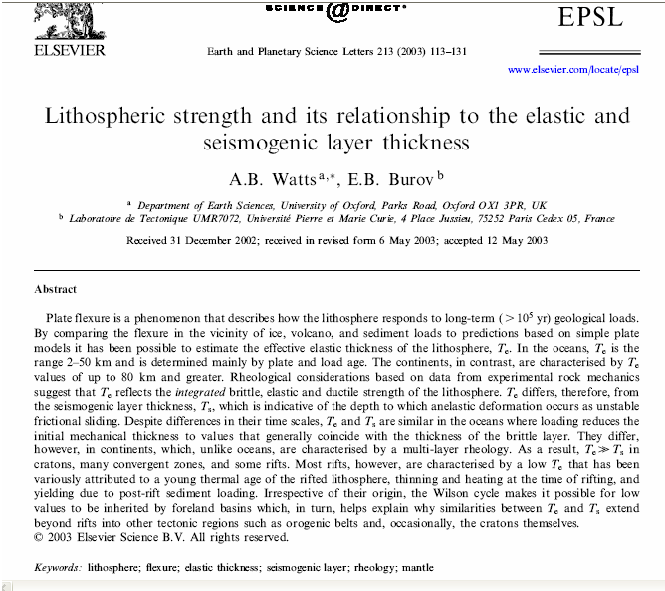Week 3


-
Lithospheric strength and its relationship to Te and Ts!
-
Why Seismic activity in the oceanic lithosphere is
limited to a depth range of around 15km?
-
Is there a difference in the mechanism that
originates shallow and deep earthquakes ?
-
Could Te and Ts follow each other and Te is always
less than Ts ?
-
What are the factors on which elastic thickness
depends?
-
How can you estimate elastic thickness from the
gravity data and topography?
-
How'll you interpret?
i) Te nearly equals Ts
ii) Te >> Ts
iii) Te < Ts
i
and iii) Effective strength of the lithosphere lies in the seismogenic layer.
ii) Strength of the lithosphere is not limited to the seismogenic layer.
Strength of the lithosphere can also reside in any layer that is aseismic. This
also gives support to a strong mantle concept if we consider it aseismic.
-
Compare the MEM method, the “no-load” approach and
the topography method for the estimation of Te, and state what author implied
out of comparing the Te values predicted from these methods ?
-
Why the author considered that the sub-crustal
mantle is and important contributor to the support of long term beds in both the
oceans and continents ?
-
How in contrary to Ts, Te reflects the integrated
strength of the entire lithosphere?
-
What is the elastic thickness of the lithosphere
(Tå) for oceans and continents ?
-
What is the Byerlee’s
law of frictional brittle failure, which characterizes deformation in the
uppermost part of lithosphere?
-
How we can determine the flexural rigidity of the
lithosphere?
Questions or Comments?
Contact:
Dr. Ali O. Oncel |